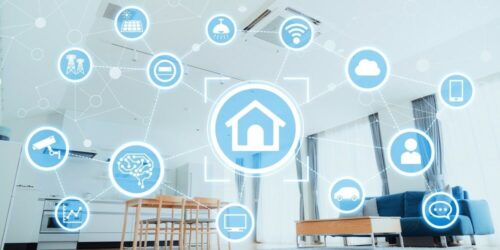
10.21.22 – SSI
Some of the key benefits of the various platforms include the sensing, monitoring and notification of lifestyles and behavior, individual device identification, and enhanced aging in place and medical alert systems.
In my previous column, I mentioned some of the world-class technologies highlighted at Parks Associates’ CONNECTIONS Conference held in Frisco, Texas, in May. One of the presentations that caught my attention outlined and detailed the great benefits of presence detection technologies.
Presence detection and the attributed AI associated with the various platforms has progressed significantly in the past few years.
The variety of approaches along with the list of benefits is something that deserves serious attention. Over the few months leading to the CONNECTIONS Conference, I spent some time investigating some technology organizations that were deploying presence detection platforms to a variety of market channels.
Presence detection is definitely not “one size fits all.” Although the platforms developed and introduced may appear to be similar at first glance, the differences are significant. The differences I refer to are not good versus bad, they are differences of the core technology and in the benefits the platforms deliver.
Although the platforms all have some overlap in features and benefits, the additional differences and markets they serve are important to consider.
Some of the key benefits of the various platforms include the sensing, monitoring and notification of lifestyles and behavior, individual device identification and enhanced aging in place and medical alert systems. Although activity and type of activity are typically primary elements of monitoring, in some scenarios the lack of activity and the type of activity are equally important.
These platforms bring additional value when augmented with other traditional systems such as a comprehensive intrusion or nonintrusion alarm system and aging in place or medical alert platform.
The market leaders and pioneers that are focused on their respective markets have embarked on various technological approaches in delivering their value proposition. It’s not just simply the matter of different market focus with similar technologies. Although all are considered presence detection, the technology and/or AI leveraged is very different to better serve each market.
For example, some may utilize WiFi sensing, wireless AI sensing and ambient sensing, which allows for the analyzing of a variety of metrics when monitoring the behavior and well-being of subscribers in addition to all activity within a premise. Others that are focused more on the presence and specifics of the people in the home by identifying the wireless devices people carry with them every day provides even greater detail that is utilized on many levels.
Platforms such as this monitor the personal wireless devices that transmit radio signals and standardized languages, like WiFi, Bluetooth and cellular. They emit these signals to transmit information or periodically look for and inform other devices and networks they are present.
The understanding of the presence of individuals, behavior and identity is of tremendous value when monitoring for safety and security. Utilizing cutting-edge AI to detect and identify the known and unknown people entering and leaving a premise provides endless value both for fundamental monitoring of premise activity — especially for the central station monitoring center when required to handle, verify, dispatch and notify on any event transmitted by a premise system.
Company brands you will see and read about among the leaders that have created and launched these technologies and platforms include HomeAware, Ubiety, Aloe Care, Origin Wireless, Cognitive Systems and Intellithings. Some of these organizations complement each other and others simply compete.
They are all very serious contenders and market leaders. I expect a tremendous amount of collaboration in the various markets. Although all these are standalone monitoring and notification systems, I believe that with thoughtful collaboration the value proposition is endless.
Think back a few years when the smart home and automation was adopted as mainstream. It was an initial step to take the industry from analog to a true digital space supported by portals and mobile apps. Although this was meaningful and definitely boosted the value proposition for greater system and monitoring adoption, the actual detection element really didn’t change much.
Bolting on presence detection to any mainstream intrusion or medical system takes this path to where it needs to be. Everything from nonintrusion monitoring to traditional intrusion monitoring.
Additionally, presence detection affords the great ability to deliver a more efficient and effective method of alarm verification for false alarm reduction, as well accelerated dispatches when the alarms are real. From the aging in place and medical alert and lifestyle monitoring aspect to intrusion detection and monitoring, these technologies provide much needed information for caregivers or monitoring centers.
Although the technologies behind these platforms take different approaches in providing these services, they are all able to monitor, analyze and report the various points without compromising security or personal data of any individual detected or monitored.
